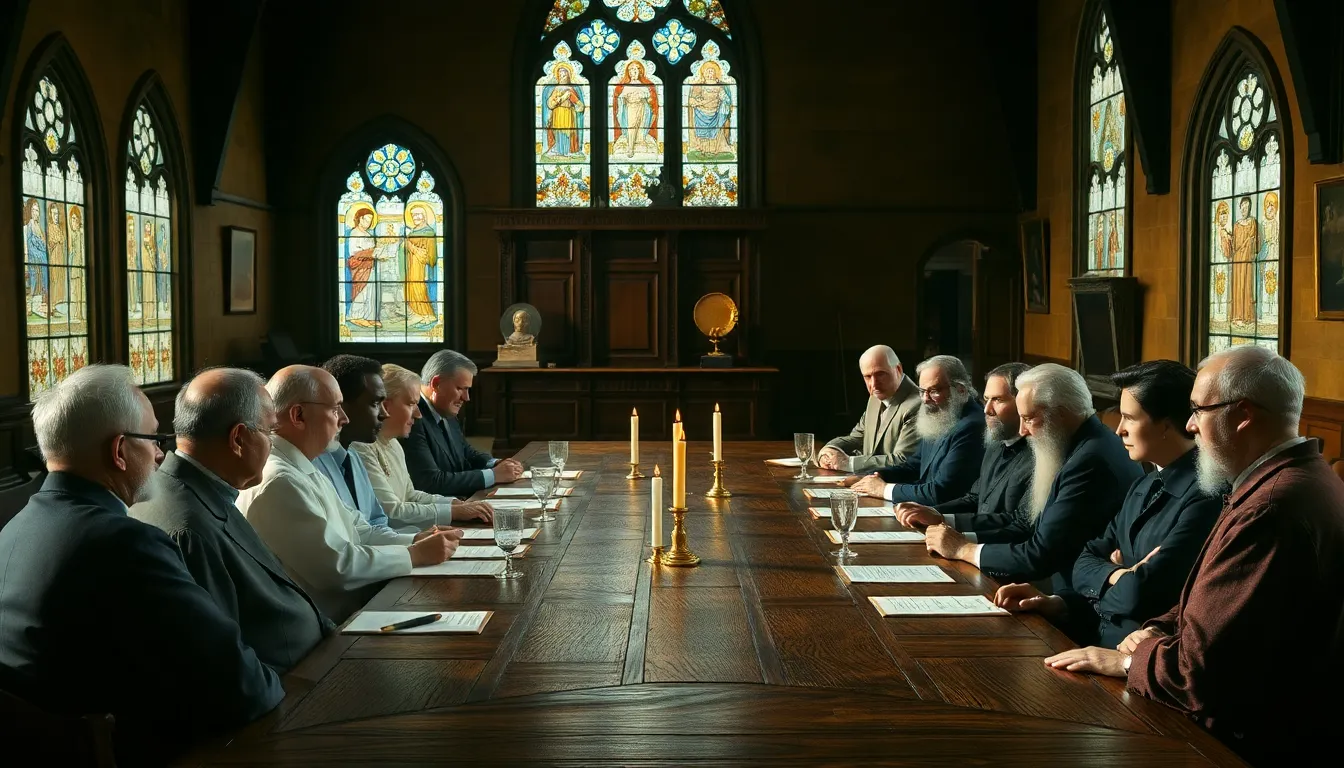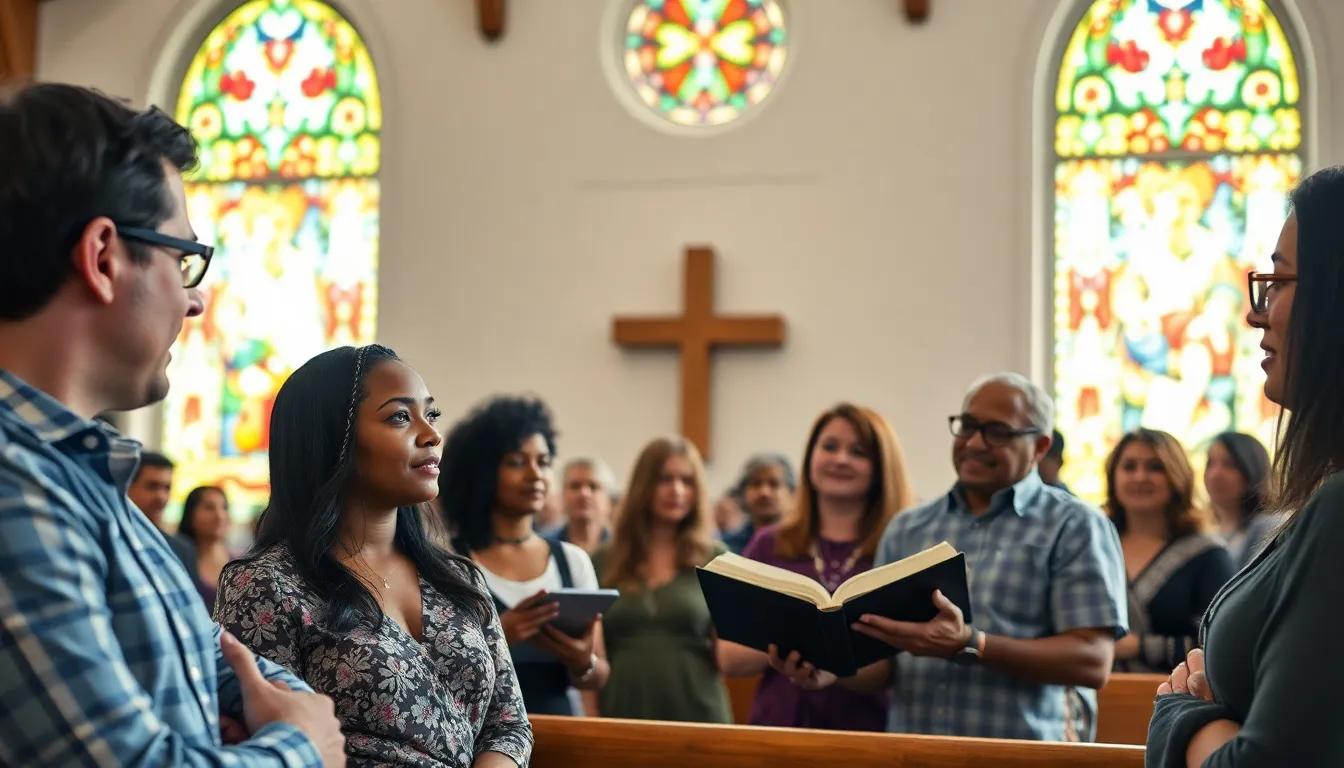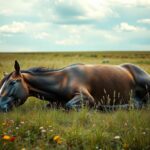We’ve all heard whispers about the “lost books” of the Bible – mysterious texts that somehow vanished from the sacred collection we know today. The truth is far more complex and fascinating than most people realize. Throughout history various religious councils church leaders and political figures have shaped which books made it into our modern Bible and which ones didn’t.
The process wasn’t as dramatic as some conspiracy theories suggest but it wasn’t exactly straightforward either. Different Christian denominations still can’t agree on which books belong in the biblical canon. The Catholic Bible contains 73 books while Protestant versions have 66 and Eastern Orthodox churches include even more texts in their collections.
Understanding who made these decisions and why they excluded certain writings reveals incredible insights into early Christianity’s development. We’ll explore the key players behind these choices and uncover the surprising reasons some ancient texts were left out of the Bible we read today.
The Formation of the Biblical Canon
The formation of the biblical canon represents a gradual process spanning several centuries rather than a single decisive moment. Early Christian communities began this selection process by evaluating which texts deserved inclusion in their sacred collection.
Early Christian Communities and Scripture Selection
Early Christian communities operated independently across the Mediterranean region during the first three centuries CE. Each community maintained its own collection of sacred texts based on apostolic authority and theological alignment with their beliefs.
Criteria for scripture selection included:
- Apostolic origin or direct connection to apostolic figures
- Widespread acceptance among multiple Christian communities
- Doctrinal consistency with established Christian teachings
- Liturgical use in worship services across different regions
Communities in Alexandria emphasized different texts than those in Rome or Antioch. The Gospel of Thomas gained popularity in some Eastern communities while Western churches favored the four canonical Gospels we recognize today. Marcion of Sinope created his own abbreviated canon around 140 CE that excluded the Hebrew Bible entirely and included only Luke’s Gospel plus ten Pauline epistles.
Gnostic communities preserved texts like the Gospel of Philip and the Gospel of Mary Magdalene. Orthodox communities rejected these writings due to their theological differences about salvation and the nature of Christ.
The Role of Church Councils in Canon Development
Church councils formalized the canon selection process through official declarations and voting procedures. The Council of Rome in 382 CE under Pope Damasus I produced the first definitive list of biblical books for the Western church.
Major councils shaping the biblical canon:
| Council | Year | Location | Key Decisions |
|---|---|---|---|
| Council of Rome | 382 CE | Rome | Listed 73 books for Catholic canon |
| Synod of Hippo | 393 CE | North Africa | Affirmed New Testament’s 27 books |
| Council of Carthage | 397 CE | North Africa | Confirmed complete biblical canon |
| Council of Trent | 1546 CE | Italy | Declared deuterocanonical books as scripture |
The Council of Carthage in 397 CE established the 27-book New Testament canon that remains standard across most Christian denominations today. Bishops at this council rejected books like the Shepherd of Hermas and the Epistle of Barnabas even though their earlier popularity.
Eastern Orthodox councils made different decisions about certain texts. The Ethiopian Orthodox Church includes 81 books in their biblical canon while most Eastern Orthodox churches accept additional books beyond the Catholic collection.
Protestant reformers in the 16th century questioned the canonicity of deuterocanonical books during the Reformation. Martin Luther moved these texts to a separate section between the Old and New Testaments before later Protestant editions removed them completely.
Key Figures Who Influenced Biblical Canon

Several pivotal individuals shaped the biblical canon through their translations, theological positions, and institutional decisions. These figures fundamentally altered which books Christians consider divinely inspired scripture.
Jerome and the Latin Vulgate
Jerome created the Latin Vulgate translation that included the Apocrypha while distinguishing their canonical status. He classified these texts as “books of the Church” rather than “books of the Canon” even though including them in his translation. The Roman Catholic Church adopted the Latin Vulgate as their standard reference, establishing it as the foundation for centuries of biblical scholarship and liturgical use.
Martin Luther and the Protestant Reformation
Martin Luther spearheaded the Protestant Reformation movement that dramatically reshaped biblical canon decisions across denominations. Protestant reformers excluded the Apocrypha from their Bible versions as part of their broader theological response to Catholic practices. Luther’s influence extended beyond Germany as Protestant churches worldwide adopted his canonical decisions about deuterocanonical books.
Catholic Counter-Reformation Leaders
Catholic Church leaders during the Council of Trent in 1546 officially included the Apocrypha in their biblical canon. This council represented the Catholic Church’s direct response to Protestant Reformation challenges about scriptural authority. Church officials at Trent affirmed that deuterocanonical books were integral to the Bible, establishing the 73-book Catholic canon that remains today.
The Apocrypha and Deuterocanonical Books

The Apocrypha encompasses several Old Testament books found in the Greek Septuagint and Latin Vulgate but absent from the Hebrew Bible. Catholic authorities recognize these texts as Scripture and designate them “Deuterocanonical” books.
Books Removed by Protestant Reformers
Protestant Reformers questioned the scriptural authority of apocryphal texts during the 16th century reformation movement. Martin Luther initiated this separation by creating a distinct section between the Old and New Testaments in his 1534 German Bible translation. Luther labeled these books “Apocrypha” and declared them useful for reading but not equal to Scripture.
Early Protestant Bibles maintained the apocryphal books as separate sections rather than removing them entirely. The 1611 King James Version included the Apocrypha between the testaments as a distinct collection. Protestant publishers gradually excluded these books from their biblical editions throughout the mid-17th century.
| Book | Catholic Status | Protestant Status |
|---|---|---|
| Tobit | Scripture | Excluded |
| Judith | Scripture | Excluded |
| Wisdom | Scripture | Excluded |
| Sirach | Scripture | Excluded |
| Baruch | Scripture | Excluded |
| Additions to Esther | Scripture | Excluded |
| Additions to Daniel | Scripture | Excluded |
Catholic vs. Protestant Biblical Differences
Catholic Bibles contain 73 books including the complete Deuterocanonical collection. Protestant Bibles typically include 66 books and exclude the apocryphal texts entirely. Church Councils determined the Catholic biblical canon while Protestant Reformers shaped their denominational collections.
Catholics regard Deuterocanonical books as divinely inspired Scripture equivalent to other biblical texts. Protestant denominations consider these books historically valuable but not authoritative for doctrine or faith practices. Jewish authorities also exclude these books from their scriptural collections.
The Protestant Reformation created lasting divisions in biblical canon composition between Christian denominations. Catholic authorities reaffirmed their 73-book canon at the Council of Trent in 1546 as a direct response to Protestant challenges.
Historical Councils and Their Decisions

Two pivotal ecclesiastical assemblies fundamentally shaped which books remained in Christian Bibles across different denominations. These councils made opposing decisions about the same collection of ancient texts.
Council of Trent (1546)
The Roman Catholic Church convened the Council of Trent to address Protestant challenges and establish definitive doctrine. Catholic leaders officially proclaimed the Apocrypha books as “sacred and canonical” during this assembly. Books like 1 and 2 Maccabees, Tobit, Judith, Sirach, Wisdom, and Baruch received equal status with other scripture texts.
The council’s decree carried severe consequences for dissenters. Catholic authorities anathematized anyone who denied the canonicity of these disputed books. This decision reinforced Catholic doctrine while directly responding to Protestant objections about biblical authority.
Catholic Bibles maintained these additional texts as divinely inspired scripture following Trent’s proclamation. The council’s ruling established the 73-book Catholic biblical canon that persists today.
Westminster Confession of Faith (1647)
Reformed Protestant leaders created the Westminster Confession as their foundational doctrinal statement. Chapter 1, Article 3 explicitly rejected the Apocrypha’s scriptural authority. The confession declared these books were “not being of divine inspiration” and held “no authority in the church of God.”
The Westminster Assembly operated under strong Puritan influence and the principle of Sola Scriptura. Protestant reformers removed these books from their biblical canon based on their commitment to Scripture Alone doctrine. This decision established the standard 66-book Protestant Bible still used by most Protestant denominations.
| Event/Confession | Date | Action About Books in the Bible |
|---|---|---|
| Council of Trent | 1546 | Confirmed Apocrypha as canonical scripture |
| Westminster Confession of Faith | 1647 | Removed Apocrypha from Protestant canon |
Protestant churches following Westminster standards excluded the deuterocanonical books entirely from their biblical collections. This created the lasting division between Catholic and Protestant biblical canons we observe today.
Political and Religious Motivations

Political forces and religious tensions shaped the biblical canon through centuries of ecclesiastical decisions. Early Church councils weighed theological concerns against institutional stability when determining which texts belonged in sacred scripture.
Theological Disputes Behind Book Removal
Doctrinal consistency became the primary filter for evaluating ancient Christian texts. The Gospel of Peter faced exclusion due to its traces of docetism, a theological belief claiming Jesus only appeared human rather than possessing true human nature. Church leaders rejected this teaching as heretical and incompatible with orthodox Christian doctrine.
Apostolic authorship served as another crucial criterion for canonical inclusion. The Acts of Paul, written in the late 2nd century, lacked clear apostolic origins and hence couldn’t meet the authenticity standards established by early church authorities. Books without direct apostolic connection were systematically excluded from consideration.
The Apocalypse of Peter encountered similar challenges about its theological content and questionable apostolic origins. Church councils examined each text’s doctrinal alignment with established Christian teachings before making canonical decisions.
Power Struggles Within Early Christianity
Jerome wielded important influence in shaping the biblical canon through his scholarly work and ecclesiastical position. His distinction between canonical and apocryphal books contributed directly to formalizing the Bible’s content structure. The Latin Vulgate translation he created established lasting precedents for biblical scholarship.
The Council of Laodicea in 363 AD demonstrated how ecclesiastical assemblies controlled canonical decisions through formal deliberation. These councils debated the Apocrypha’s inclusion and eventually excluded these texts from many Christian denominational traditions.
Denominational differences emerged during the Protestant Reformation when theological disagreements led to varying biblical canons. Protestant reformers excluded the Apocrypha from their Bible versions while Catholic authorities retained these books as canonical scripture. This represented competing religious authorities asserting different standards rather than unified church decisions.
Church leaders across different regions exercised varying degrees of influence over their communities’ accepted texts. Eastern Orthodox churches, Catholic authorities, and Protestant reformers each established distinct canonical boundaries reflecting their theological priorities and institutional power structures.
Impact on Modern Christianity

The variations in biblical canon continue to shape denominational practices and theological interpretations across Christianity today. These differences influence everything from liturgical readings to doctrinal teachings within each tradition.
How Canon Differences Affect Denominations Today
Catholic and Eastern Orthodox Churches include the deuterocanonical books in their official Bibles, while Protestant Churches maintain the 66-book canon. This fundamental difference creates distinct theological frameworks that affect worship practices and scriptural interpretation.
Catholic liturgical readings frequently incorporate passages from Tobit and Judith, providing additional narrative context for understanding salvation history. Eastern Orthodox traditions similarly draw from these texts during religious ceremonies and theological instruction.
Protestant denominations focus exclusively on the Hebrew canon for Old Testament references, emphasizing different theological themes and historical perspectives. Lutheran churches initially maintained the Apocrypha in separate sections, though most modern Protestant editions exclude these texts entirely.
These canonical variations influence denominational approaches to:
- Scriptural authority – Catholics regard deuterocanonical books as divinely inspired Scripture
- Liturgical practices – Different texts provide varying foundations for worship traditions
- Theological education – Seminary curricula reflect canonical boundaries of each tradition
- Doctrinal interpretation – Additional books offer expanded theological perspectives on afterlife concepts
Scholarly Perspectives on Lost Scriptures
Modern biblical scholars classify texts like the Gospel of Thomas and the Book of Enoch as “non-canonical” rather than genuinely “lost” books. These ancient writings remain accessible to researchers and provide valuable insights into early Christian thought and practices.
The Gospel of Thomas contains sayings attributed to Jesus that differ significantly from canonical Gospel accounts. Scholars analyze these texts to understand the diversity of early Christian communities and their theological development.
Academic research continues examining these non-canonical writings for their historical significance rather than their spiritual authority. The Book of Enoch, referenced in the New Testament book of Jude, offers perspectives on apocalyptic literature that influenced early Jewish and Christian thought.
Contemporary scholarship recognizes these texts as important for:
- Historical context – Understanding the broader literary environment of early Christianity
- Theological development – Tracing the evolution of Christian doctrine and practice
- Cultural insights – Revealing the diversity of beliefs in ancient religious communities
- Comparative analysis – Examining similarities and differences with canonical texts
Most Christian denominations maintain their traditional stance on these writings, viewing them as historically interesting but not divinely authoritative for faith and practice.
Conclusion
We’ve seen how the biblical canon emerged through centuries of careful deliberation rather than sudden removal by any single authority. The process involved early Christian communities church councils and influential scholars who shaped what we recognize as Scripture today.
These decisions continue to influence modern Christianity with Catholics Protestants and Eastern Orthodox churches maintaining different canonical boundaries. Each tradition reflects distinct theological priorities and historical developments that began in the early centuries of the faith.
Understanding this complex history helps us appreciate both the diversity within Christianity and the thoughtful process behind biblical formation. The “missing” books weren’t arbitrarily discarded but rather reflect the careful theological and pastoral considerations of early Christian leaders.
Frequently Asked Questions
What are the “lost books” of the Bible?
The “lost books” of the Bible refer to ancient religious texts that were considered for inclusion in the biblical canon but were ultimately excluded. These include books like the Gospel of Thomas, the Book of Enoch, and various apocryphal writings. They weren’t actually “lost” but rather deemed non-canonical by early church councils based on criteria like apostolic origin, doctrinal consistency, and widespread acceptance among Christian communities.
Why do different Christian denominations have different numbers of books in their Bibles?
The variation stems from decisions made during the Protestant Reformation and earlier church councils. The Catholic Bible contains 73 books, Protestant Bibles have 66, and Eastern Orthodox churches include even more. These differences arose from disagreements about the canonical status of the deuterocanonical books (Apocrypha), with Protestant reformers like Martin Luther excluding them while Catholic and Orthodox churches maintained their inclusion.
Who decided which books would be included in the Bible?
The biblical canon was shaped by various church councils, religious leaders, and early Christian communities over several centuries. Key councils include the Council of Rome (382 CE), Synod of Hippo (393 CE), and Council of Carthage (397 CE). Influential figures like Jerome, who created the Latin Vulgate translation, and Martin Luther during the Protestant Reformation also played crucial roles in determining the final composition.
What role did the Council of Trent play in the biblical canon?
The Council of Trent (1546) was pivotal in establishing the Catholic biblical canon. It officially proclaimed the Apocrypha as “sacred and canonical,” reinforcing Catholic doctrine with a 73-book Bible. This was largely a response to Protestant challenges during the Reformation. The council anathematized anyone who rejected these books, creating a lasting division between Catholic and Protestant biblical canons that persists today.
Why were books like the Gospel of Thomas excluded from the Bible?
Books like the Gospel of Thomas were excluded based on several criteria established by early church councils. These included lack of apostolic authorship, limited acceptance among Christian communities, and doctrinal inconsistencies with established Christian teachings. The Gospel of Thomas, for example, contained gnostic elements that conflicted with mainstream Christian theology, leading to its exclusion from the canonical scriptures.
What is the difference between canonical and apocryphal books?
Canonical books are those officially recognized as divinely inspired Scripture by religious authorities, while apocryphal books are considered useful for reading but not authoritative for doctrine. The distinction varies by denomination: Catholic and Orthodox churches accept certain apocryphal books as canonical (deuterocanonical), while Protestant churches reject their canonical status entirely, maintaining only the 66-book canon established during the Reformation.
How did Martin Luther influence the biblical canon?
Martin Luther significantly impacted the Protestant biblical canon during the 16th-century Reformation. He questioned the authority of the deuterocanonical books, labeling them as “Apocrypha” – useful for reading but not equal to Scripture. Luther initially placed these books in a separate section, and later Protestant editions removed them entirely. His decisions led to the standard 66-book Protestant Bible used today.
What criteria were used to determine biblical canonicity?
Early Christian communities and church councils used several key criteria to determine biblical canonicity: apostolic origin (written by apostles or their close associates), widespread acceptance among Christian communities, doctrinal consistency with established Christian teachings, and liturgical use in worship services. Books had to demonstrate divine inspiration and align with the core tenets of Christian faith to be considered for inclusion.
Do non-canonical texts have any value for modern Christians?
Yes, non-canonical texts like the Gospel of Thomas and Book of Enoch provide valuable historical and theological insights into early Christian thought and practices. While not considered divinely authoritative, scholars study these texts to understand the diversity of beliefs in ancient religious communities, the development of Christian theology, and the cultural context of early Christianity. They contribute to biblical scholarship and historical understanding.
How do modern denominations handle the differences in biblical canons?
Modern Christian denominations maintain their distinct canonical boundaries, which affect liturgical readings, doctrinal teachings, and theological frameworks. Catholic and Eastern Orthodox churches continue to include deuterocanonical books in their worship and teaching, while Protestant churches maintain the 66-book canon. These differences influence scriptural interpretation, religious education, and pastoral guidance, reflecting each tradition’s theological priorities and historical development.











